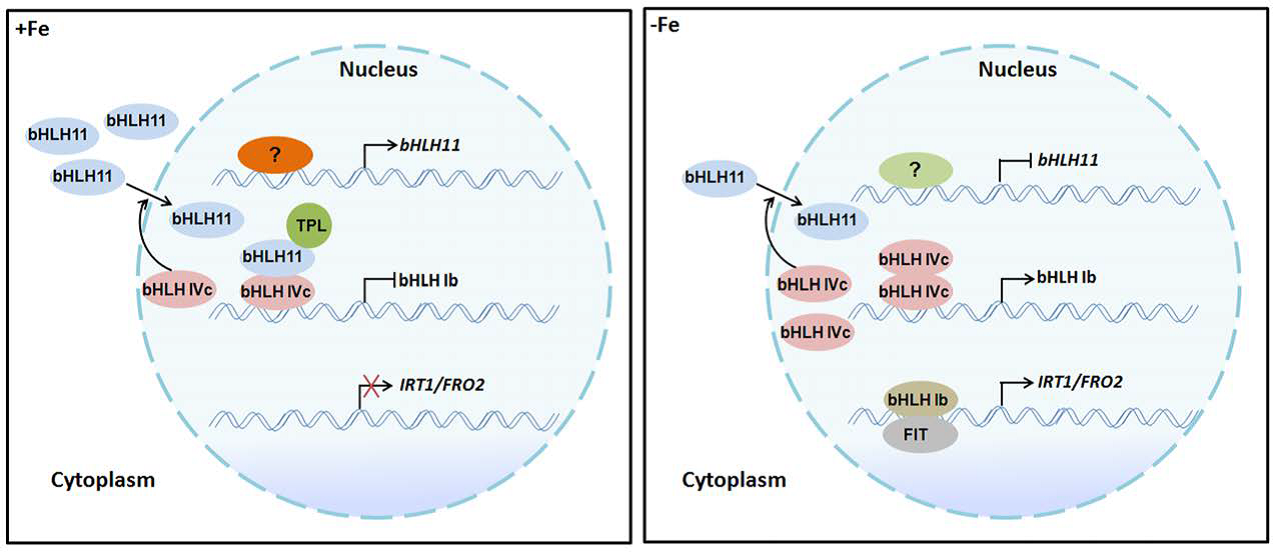Iron (Fe) is an indispensable microelement for plant growth and development, but Fe excess can be toxic to plants. To maintain Fe homeostasis, plants must sense the environmental Fe concentration and fine-tune the expression of Fe uptake-associated genes accordingly. Previous studies have shown that bHLH11 is a negative transcription factor that regulates Fe homeostasis. However, the underlying molecular mechanism remains elusive.
In a recent study published in Plant Physiology, researchers from Xishuangbanna Tropical Botanical Garden (XTBG) characterized the roles of bHLH11 in the maintenance of Fe homeostasis in Arabidopsis. They showed that bHLH11 acts an active repressor by recruiting TOPLESS (TPL)/TPL-RELATED (TPRs). bHLH11 contributes to Fe homeostasis by repressing bHLH IVc transcription factors.
The researchers employed the CRISPR-Cas9 system to edit bHLH11. They generated two loss-of-function bhlh11 mutants in Arabidopsis (Arabidopsis thaliana) which display enhanced sensitivity to excess Fe, increased Fe accumulation, and elevated expression of Fe deficiency responsive genes.
They found that bHLH11 protein decreased under Fe deficient conditions, which may benefit plants by alleviating the repression of bHLH11 to Fe uptake associated genes. bHLH11 repressed the promoter of bHLH38 in the transient expression assays. The transient induction of bHLH11 reduced the abundance of bHLH Ib genes in the pER8-bHLH11 plants.
Moreover, the overexpression of bHLH11 reduced the levels of bHLH Ib genes in the FER-LIKE IRON DEFICIENCY-INDUCED TRANSCRIPTION FACTOR (FIT)-2 under Fe sufficient conditions. The abundance of bHLH Ib genes were balanced by bHLH IVc transcription factors and bHLH11.
Further analysis showed that bHLH11 negatively regulated the expression of the down-regulation of Fe uptake genes IRT1 and FRO2I. It functioned negatively and had two amphiphilic repression (EAR) motifs, both of which can interact with TPL/TPRs, suggesting that bHLH11 is an active repressor.
“Our study provides experimental support for the existence of an elaborate system that allows plants to respond dynamically to Fe status,” said LIANG Gang, principal investigator of the study.
Contact
LIANG Gang Ph.D Principal Investigator
Key Laboratory of Tropical Plant Resources and Sustainable Use, Xishuangbanna Tropical Botanical Garden, Chinese Academy of Sciences, Menglun 666303, Yunnan, China
E-mail: lianggang@xtbg.ac.cn

A working model of bHLH11 in Fe homeostasis. (Image by LI Yang)

